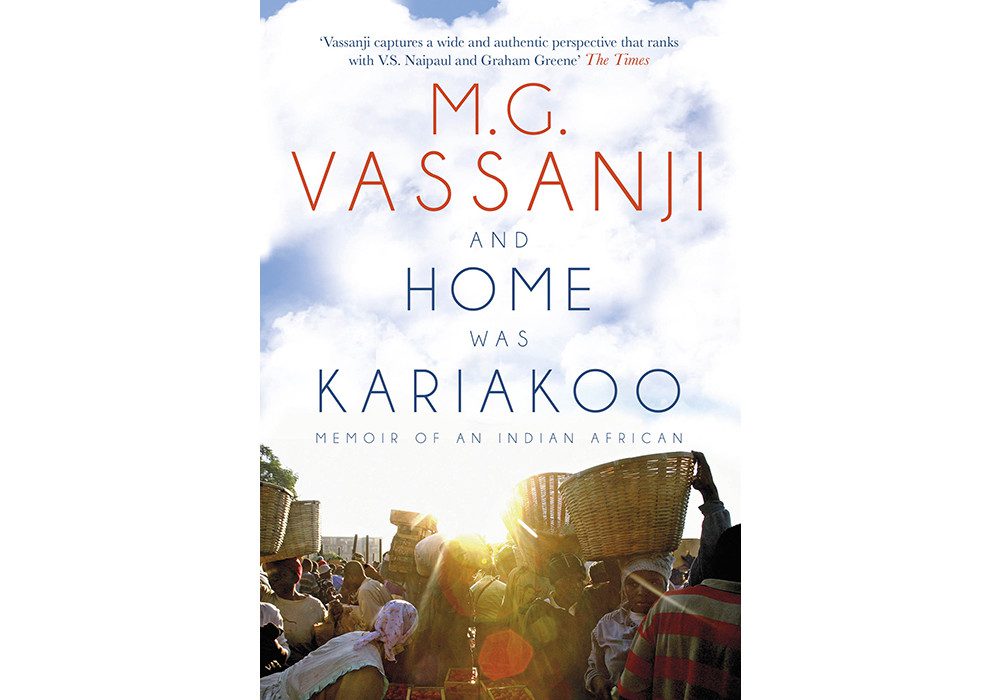MG Vassanji believes that we should tell our own stories. His book on East Africa, part-history, part-travelogue and part-memoir, provides an important, often ignored, perspective to a fascinating period of history.

And Home Was Kariakoo
MG Vassanji
Doubleday Canada
Rs 1,555 | 400 pp
Subtitled “Memoir of an Indian African”, Vassanji’s book tussles with the concept of home and identity. He writes in English, speaks in English, lives in an English-speaking nation, and his ancestors hail from a nation that rapidly is adopting English as its mother tongue. At the same time, he revels while using Swahili, strikes an immediate rapport with the locals, shares stories from his childhood, and feels at home in East Africa. Throughout the book, Vassanji seems preoccupied with placing himself in this schema. Being an Indian in Africa has always been complicated: “To the poor Africans [Indians] were the one raking in the cash. To the white colonials we were the bone in the kabab—spoiling their black-and-white picture of Africa.”
Vassanji belongs to the third generation of Indians, primarily Gujaratis, who migrated to East Africa in the 19th and early 20th centuries in search of a livelihood. Born in Nairobi, he had to move to Dar es Salaam in Tanzania to live with relatives after the untimely death of his father. It was here in Dar, in a small locality called Kariakoo near the Indian neighbourhood of Gaam, where his childhood was spent.
Being an Indian in Africa has always been complicated: “To the poor Africans [Indians] were the one raking in the cash. To the white colonials we were the bone in the kabab—spoiling their black-and-white picture of Africa.”
Vassanji revisits many of the places that he holds close to his heart—and highlights the transformation they underwent. A lot of Asians who lived in the Tanzania of his yesteryears moved out during the heydays of socialism, when the government was tightening its grip on rich Indian businessmen; the Gaam of his childhood has been drastically made over. “The business streets of these upcountry towns look haunted, as they wait to fill the vacuum left by their Asians.” But not all has changed. When he visits Nairobi, he writes, “[Nairobi has] maintained a level of integrity. The grotesque forms of development have been avoided.”
Vassanji has presented a detailed historical commentary of the evolution of East Africa, its politics and economics, over the past 200 years, some events even dating back to Ibn Batuta’s time. Part-travelogue, part-history and part-memoir, the book spans 25 chapters, each about a city that forms a stopover in his travel itinerary. This journey is as much of a quest to identify and place himself in his continent as it is to understand it. Vassanji traces ancient caravan routes, uncovering stories and legends through interviews and thorough readings of the books and notes of and about the western explorers like David Livingstone or Sir Henry Morton Stanley, or Richard Francis Burton and John Hanning Speke’s dramatic expedition to find the source of Nile, which led to a bitter rivalry between the two men.
In lavish detail, like a professional historian, he recounts the events that led up to the Zanzibar Revolution, tying up snippets from politics, anecdotes from his interviews and reports to present a comprehensive picture. Explaining his obsession with history, he asserts his Canadian identity. “In a world where I now come from, history is revered as record. It is there to teach us about ourselves.” The history doesn’t only delve into the past, but ventures into the present as well, as he describes an encounter with the current generation of foreign-educated sons and daughters of his friends. They are global in their outlook, speak and write in English and await opportunities abroad. Like he did. “Will they ever return?” He leaves the question unanswered.
Explaining his obsession with history, he asserts his Canadian identity. “In a world where I now come from, history is revered as record. It is there to teach us about ourselves.”
Most African history till date has been from a Westerner’s perspective, be it Stanley’s oft-prejudiced prose, suffering from the white man’s burden, or Speke’s well-written but unreliable notes. There have been no records whatsoever from the African men who accompanied these explorers in their caravans, the Indians who left their home in Gujarat for an alien place, the slaves who were traded in secret or badly treated. “We should tell our own stories,” Vassanji says to the students of each school and college where he goes to lecture. The records of those perished lives of the past might have disappeared forever, but Vassanji’s timely memoir assures that whatever is left of the past has been recorded with great flair and care. After all, despite straddling three continents, speaking three languages, his heart resides at home: Kariakoo.


